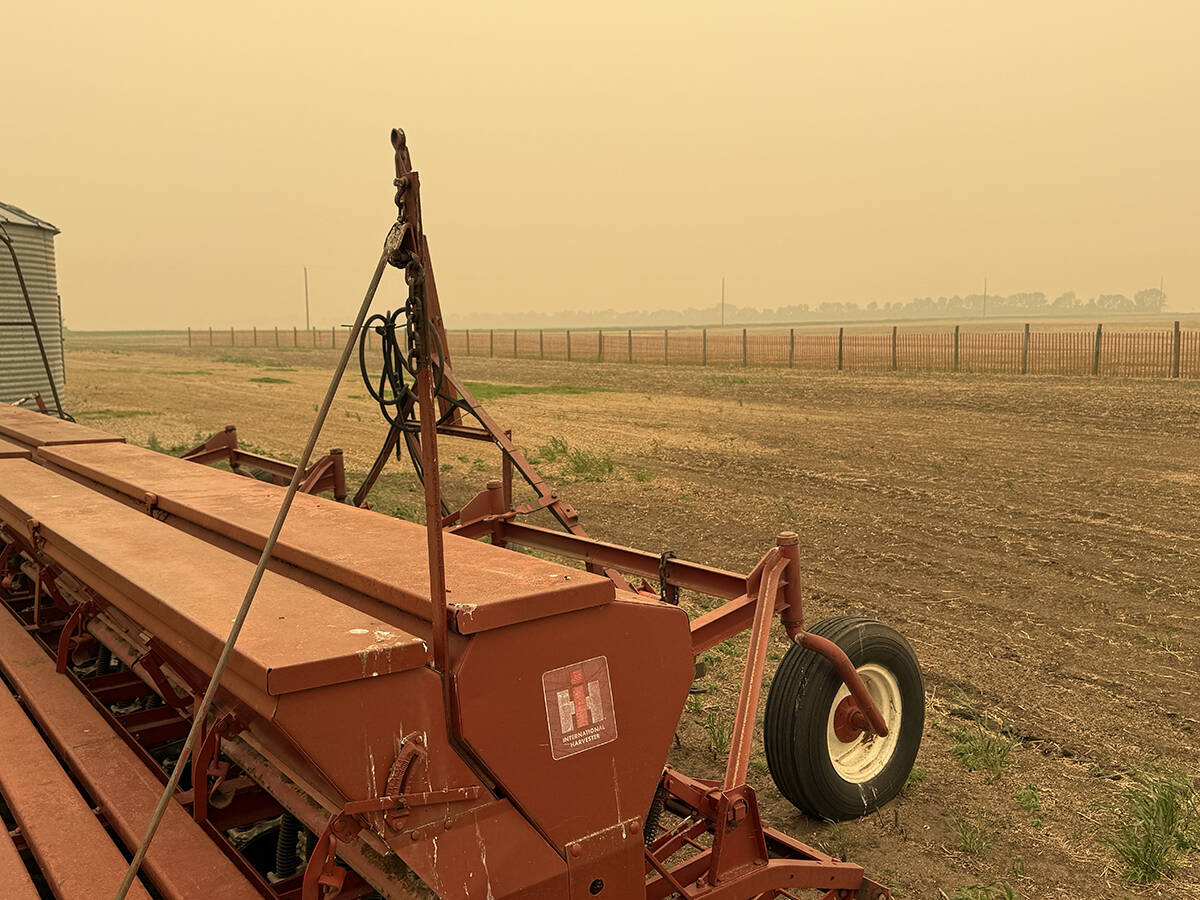The company that launched the first GM canola in 1995 won’t have its next big offering ready until the middle of the next decade.
“Twenty years is too long. But it is what it is,” said Neil Arbuckle, canola business development lead for Monsanto Canada.
People have accused Monsanto of backing away from canola, focusing instead on corn, soybean and cotton.
Arbuckle is puzzled by such remarks because Monsanto spends more on canola than its competitors. The company employs 35 full-time staff in its canola breeding program in Canada and is evaluating 76,000 lines, up from 36,000 a few years ago. The goal is to have 100,000 lines in its program.
Read Also

Wildfires have unexpected upside this year
One farmer feels smoke from nearby wildfires shrouded the July skies and protected his crop from the sun’s burning rays, resulting in more seeds per pod and more pods per plant.
“We’re really, really ramping up,” Arbuckle told a scant crowd attending his presentation at the Agri-Trend 2008 Farm Forum Event.
The seed developer is spending more than $20 million annually on canola development.
“It’s a huge, massive investment,” he said.
Monsanto is kicking its canola research program into high gear to help the industry meet its goal of producing 15 million tonnes of product by 2015, up from an estimated 10.9 million tonnes in 2008.
The company was encouraged by the confidence processors, exporters and trade associations expressed in having future demand for 15 million tonnes of product.
The objective is based on the assumptions that acreage and yields will increase by 30 and 35 percent respectively between 2006 and 2015. Arbuckle thinks Monsanto can assist on both those fronts by developing varieties that are higher yielding, better at fighting disease and that make better use of inputs like fertilizer and water.
Its first new trait will be Roundup Ready 2 canola, which will offer growers better glyphosate tolerance with a wider window of application and higher application rates.
Results from 2007 field trials show the crop can handle eight times the recommended application rate of Roundup with no detrimental effect on yield.
“We’re feeling really good about that,” Arbuckle said in an interview following his presentation.
Another line in the same phase of testing is the Roundup Ready 2 crop with the addition of a high-yielding gene. The 2007 results show an 11 to 14 percent yield increase over regular Roundup Ready canola at 14 locations.
The company is in the process of analyzing 2008 results. Neither crop is expected to be commercially available until about 2015.
Roundup Ready 2 will provide a platform on which other beneficial genes will be stacked. Some of the other traits under consideration are pod shatter resistance, higher oil content, nitrogen use efficiency, frost tolerance and resistance to other herbicides.
Arbuckle said part of the delay in getting the traits to market is the lengthy registration process. It takes about four years from the time a company first submits its data until final approval from a regulatory body.
Moving a biotech crop from concept to commercialization can take 10 years and $100 million, a long and expensive process. And that is only going to get worse.
Monsanto’s regulatory experts have told Arbuckle that the United States Department of Agriculture will be asking a lot more questions about upcoming yield and stress traits.















